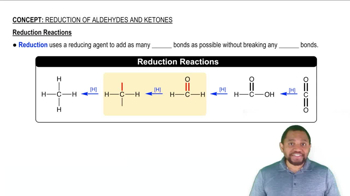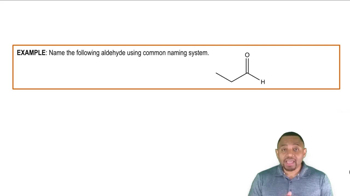Draw the structures of the products formed when the following compounds react with a reducing agent.
a.
 Verified step by step guidance
Verified step by step guidance Verified video answer for a similar problem:
Verified video answer for a similar problem:



 2:38m
2:38mMaster Reduction Reactions Concept 1 with a bite sized video explanation from Jules
Start learning